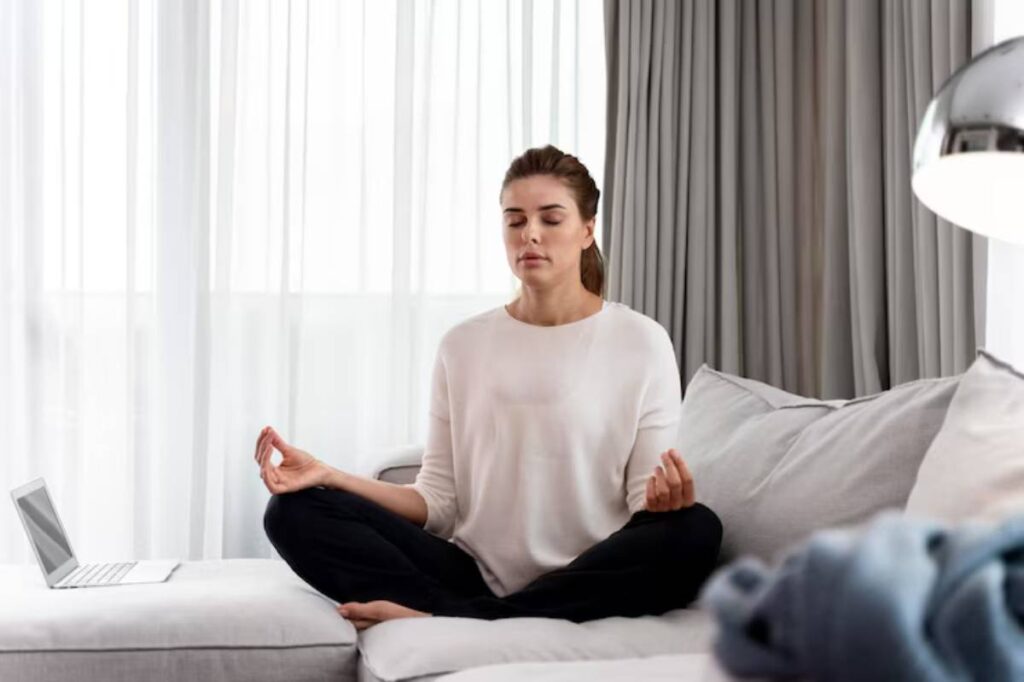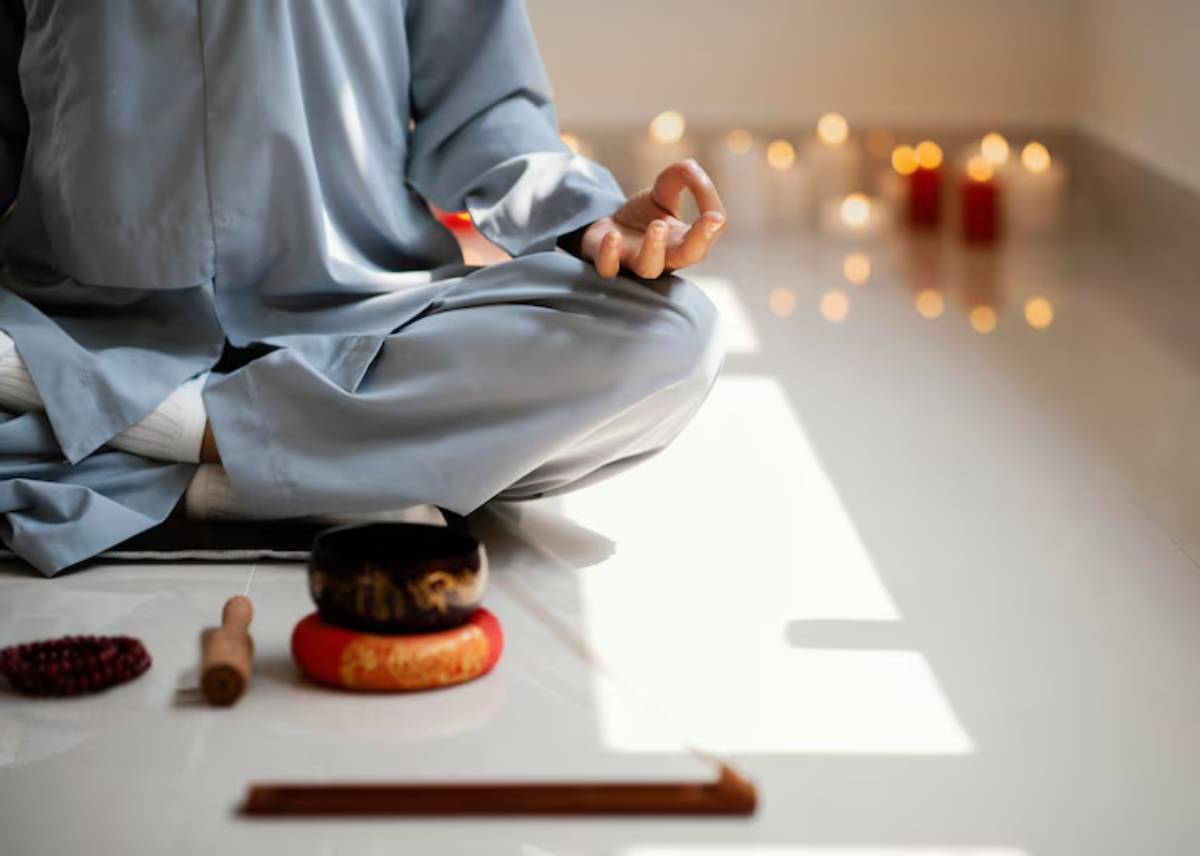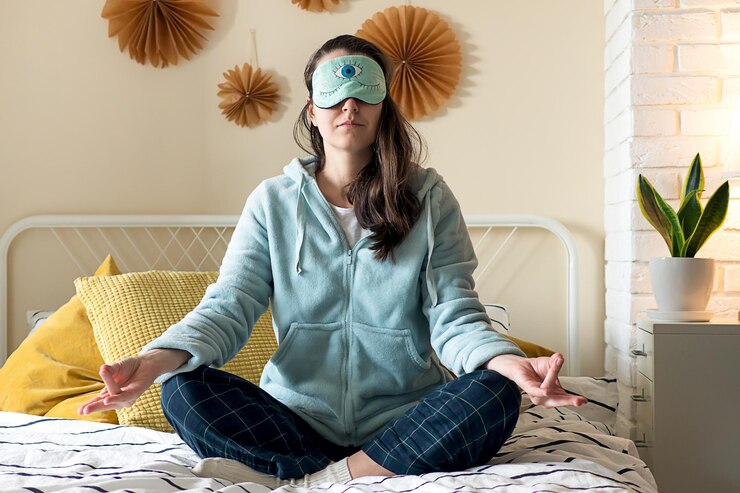The Health Blog

Guided Meditation Practices for Better Sleep
There’s nothing quite like bedtime to make the brain start performing. Thoughts that stayed quiet all day suddenly get loud. To-do lists, random memories, worries that feel too big in the dark — they all show up just when sleep is supposed to.
It’s no wonder so many people lie awake, tossing and turning, wondering why they can’t switch off.
But maybe sleep isn’t something to force. Maybe it’s something to invite — gently and patiently. That’s where guided meditation practices for better sleep can make all the difference.
Why Meditation Before Bed Works
Meditation isn’t just about sitting cross-legged in silence for hours. At its core, it’s about learning to notice thoughts without chasing them. It’s about giving the mind a soft place to land after a long, noisy day.
When used at bedtime, meditation becomes a bridge — from thinking to resting, from doing to being. It helps shift the nervous system from “fight or flight” to “rest and digest.” And when the body enters that calmer state, sleep comes easier.
These practices don’t make sleep happen instantly. But they do make the process smoother — less about trying, and more about allowing.
The Benefits of Sleep Meditation Techniques

Meditation before bed offers a range of benefits — not just for falling asleep, but for staying asleep and waking up with more clarity.
Here’s what regular practice can support:
- Slower heart rate and lower blood pressure
- Reduced anxiety and racing thoughts
- Better melatonin production (the sleep hormone)
- Deeper, more restorative sleep cycles
- Fewer night-time awakenings
And perhaps most importantly — a gentler, more compassionate approach to sleeplessness itself.
Different Styles of Guided Relaxation

There’s no single right way to meditate before sleep. Some people prefer quiet breathing. Others respond better to gentle voice guidance. Some enjoy visual imagery. The key is to explore and see what fits.
Here are some popular guided relaxation styles that help promote better sleep:
1. Body Scan Meditation
This technique involves mentally scanning the body from head to toe, noticing tension and consciously letting it go. It brings awareness into the present moment and helps release physical tightness.
Best for: People who feel physically tense or restless at night.
How it works: Lie down and close your eyes. Then, listen to a voice (or guide) that helps you focus on each part of your body. Start at the top of your head and end at your toes.
2. Breath Awareness Meditation
The breath is always with us, which makes it one of the most grounding tools for sleep. Focusing on slow, steady breathing calms the nervous system and slows the heart rate.
Best for: Calming anxiety or an overactive mind.
How it works: Count the breath (in for 4, out for 6), or simply notice the feeling of air moving in and out of the nose. Some guided versions offer gentle verbal cues to stay focused.
3. Visualisation Meditation
This practice uses gentle imagery to guide the mind into a peaceful setting — a forest, a beach, a quiet mountain path.
Best for: People who are more visual or imaginative, or those who struggle to sit still in silence.
How it works: A calming voice paints a picture of a relaxing environment, encouraging full sensory engagement (what can be seen, heard, felt). This transports the mind away from stress and into safety.
4. Gratitude-Based Meditation
Focusing on what feels good, safe, or appreciated can boost your emotional well-being. This is especially true before bed.
Best for: Quieting negative spirals or bedtime worry.
How it works: A guide prompts reflection on three or more things that went well or felt good that day. This can create a soft emotional landing space before sleep.
5. Mantra Meditation
Repeating a calming word, phrase, or sound can help quiet mental noise. Mantras don’t need to be spiritual — even a word like “peace” or “let go” works well.
Best for: Those who enjoy rhythm or repetition as a focus.
How it works: Repeat the chosen word silently on each breath. Guided versions often use soft background music or ambient tones to support the rhythm.
Choosing a Mindfulness Practice for Sleep

Not all meditation styles suit everyone. What works for one person might feel distracting to another. That’s okay. The process of exploring is part of the journey.
Here are a few things to consider when choosing a mindfulness for sleep practice:
- Try different styles. Start with short recordings (5–10 minutes) to test what feels good.
- Use a consistent time. Practising at the same time every night builds habit and familiarity.
- Let go of expectations. The goal isn’t to fall asleep during the meditation — it’s to prepare the mind for rest.
- Use tools that feel calming. Apps, audio clips, or YouTube channels can all be useful — especially ones with gentle voices and soft pacing.
The more a practice feels like a personal wind-down rather than a task, the more effective it becomes.
Creating a Calm Space for Meditation
Even the best meditation can be disrupted by a stressful environment. Setting up a natural sleep setting helps the brain associate the space with rest and quiet.
Simple ways to support sleep meditation include:
- Dim the lights or use soft lamps
- Keep screens away during the wind-down period
- Use a diffuser with calming scents like lavender or chamomile
- Play ambient music or white noise if silence feels uncomfortable
- Lie down in a comfortable position, with supportive pillows or blankets
Consistency helps the body recognise this space as one for sleep, not stimulation.
A Simple Nightly Routine to Try
Here’s an example of how a 30-minute bedtime routine with meditation might look:
- 30 minutes before bed: Turn off screens. Lower the lights. Make a cup of herbal tea if desired.
- 20 minutes before bed: Do 5–10 minutes of light stretching or breathwork. This helps release the day from the body.
- 15 minutes before bed: Begin a guided sleep meditation — audio only. Choose body scan, visualisation, or another style based on preference.
- After the meditation ends: Stay still. Let the body rest without judgment. If sleep comes, let it. If it takes time, allow that too.
Gentle Reminders for Difficult Nights
Not every night will be easy. Some thoughts won’t go quietly. Some nights the body won’t cooperate.
That doesn’t mean the meditation didn’t “work.” It means the practice is doing exactly what it’s meant to — meeting the mind where it is, and offering a safe place to rest.
Even without instant sleep, the nervous system benefits from the calm. And over time, that calm builds into something powerful.
Rest Is a Skill, Not a Switch
The pressure to fall asleep can be heavy. It creates stress around the very thing that’s supposed to relieve stress.
Meditation steps in as a gentle alternative. A way to say, “It’s okay to rest now. There’s nothing more to fix tonight.”
In the world of sleep meditation techniques, the perfect method doesn’t exist. Kindness to the mind is key. Slow down, breathe, and just be. This practice is the most valuable of all.
To learn about optimising your space, check out Creating a Sleep-Friendly Bedroom Environment









